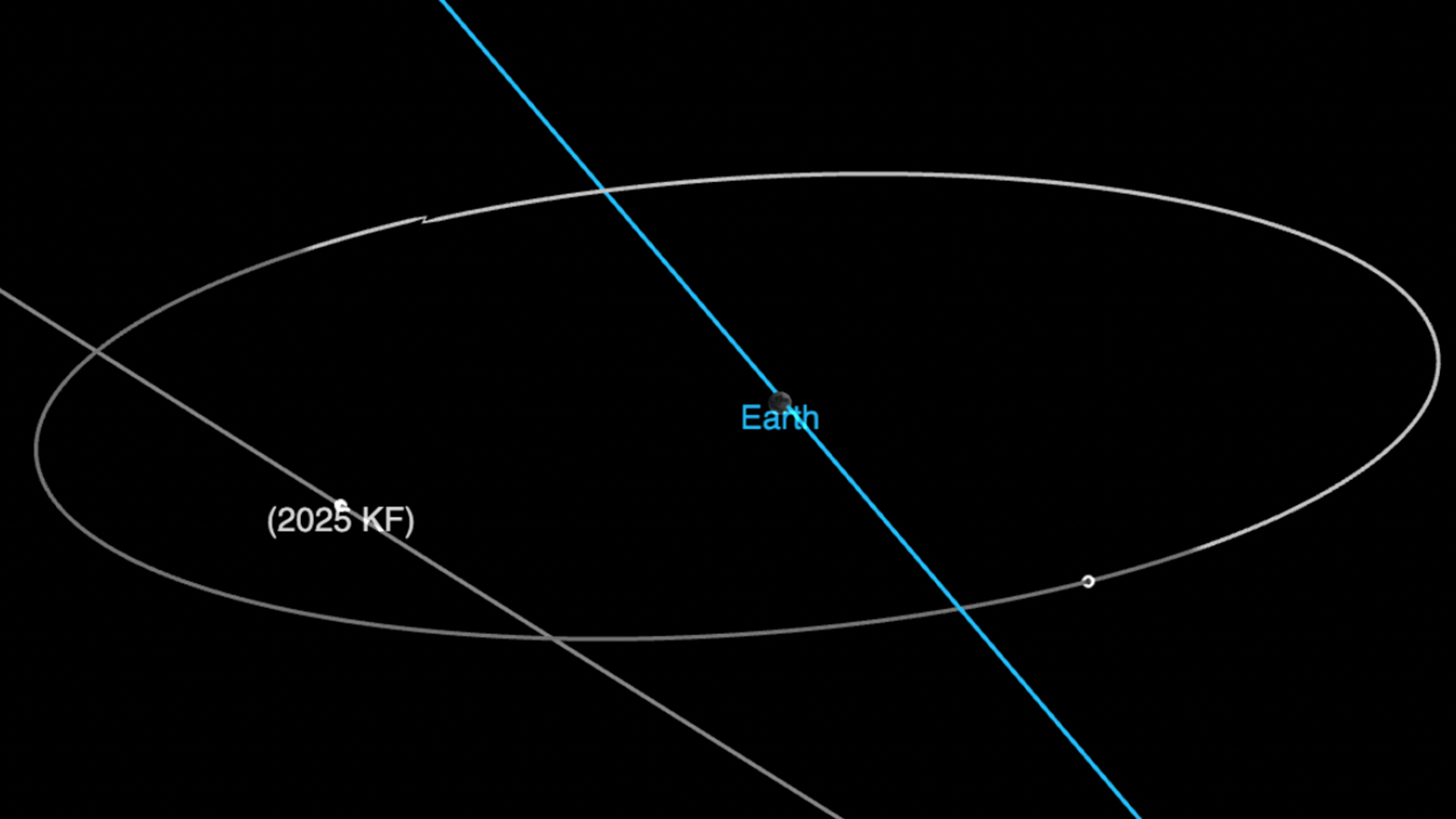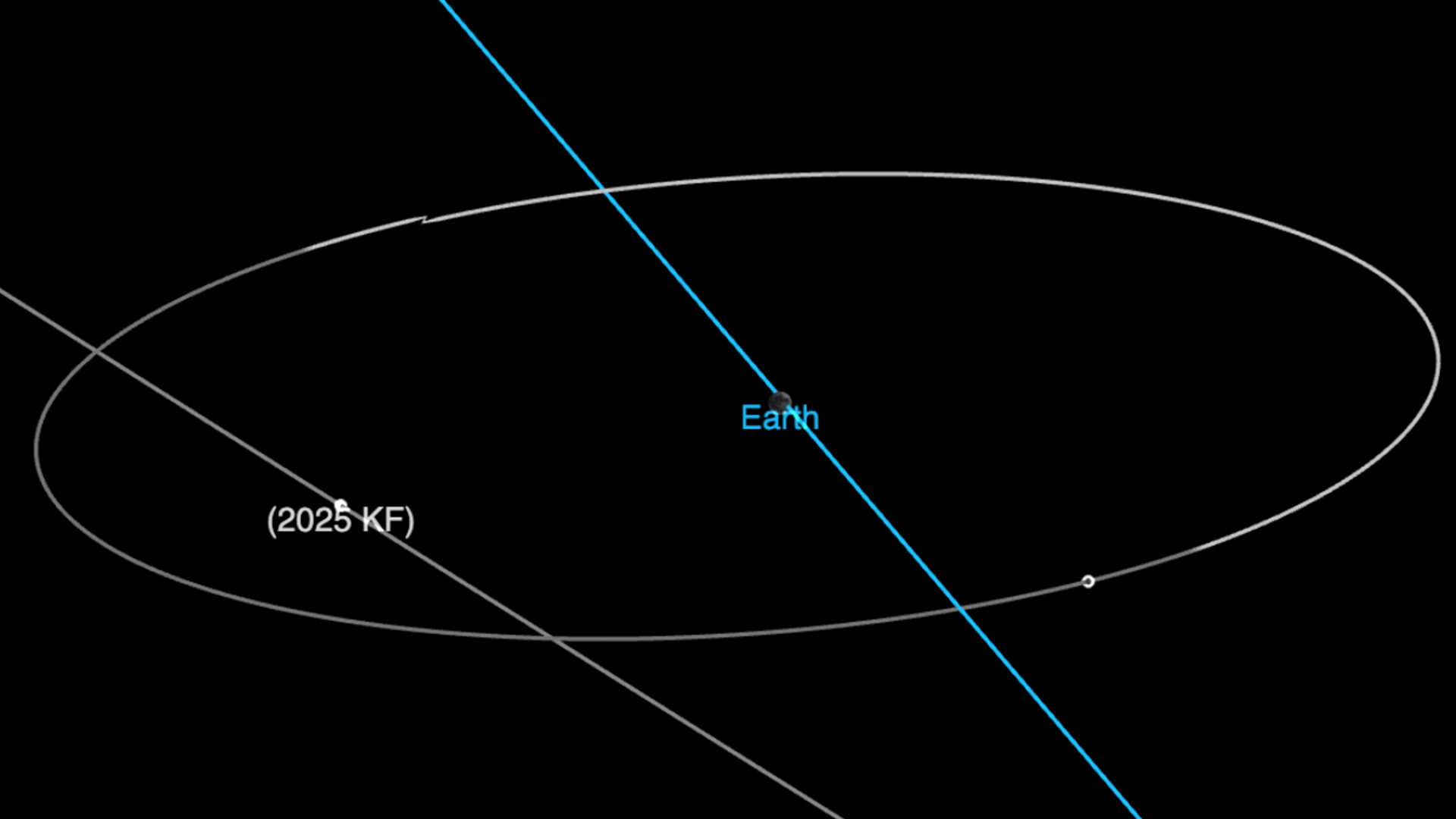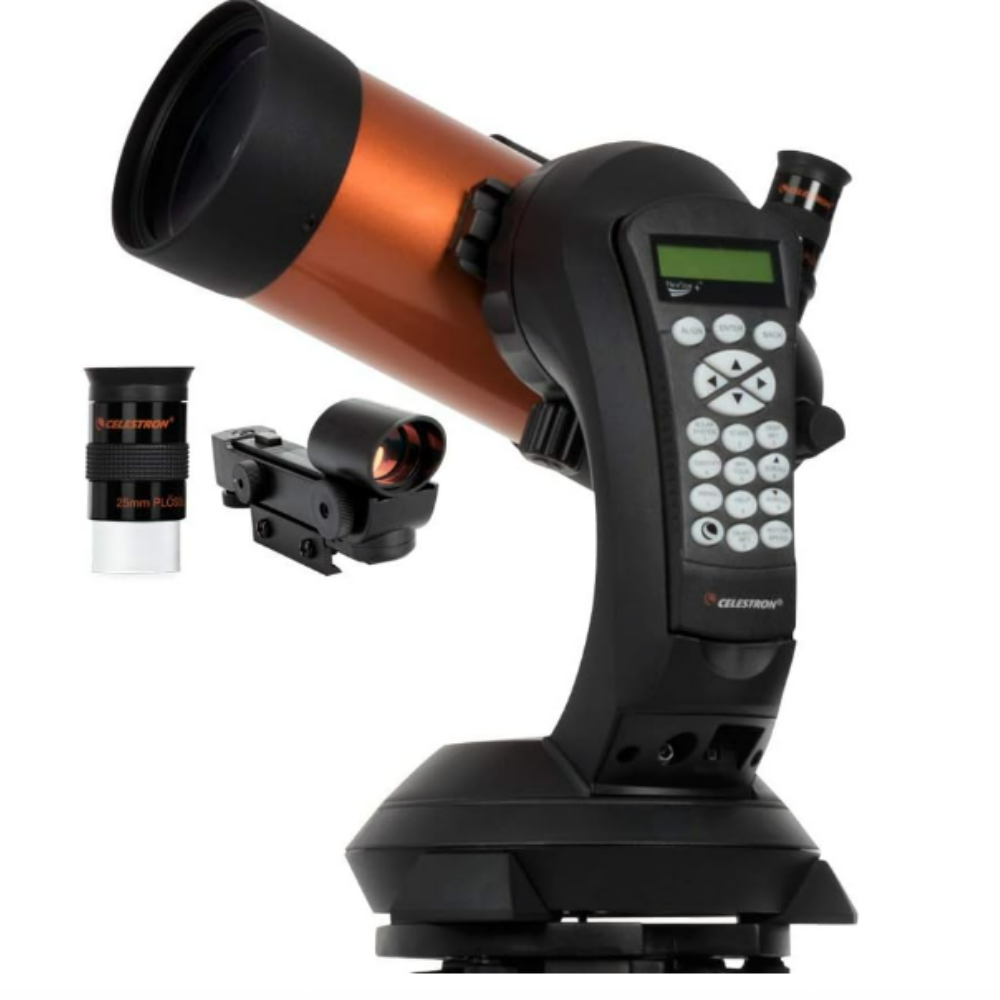Now Reading: House-size asteroid will pass between Earth and moon on May 21
-
01
House-size asteroid will pass between Earth and moon on May 21
House-size asteroid will pass between Earth and moon on May 21

A newly discovered house-size asteroid is set to make a close, yet harmless approach to Earth on May 21, passing within one-third of the Earth-moon distance.
The close approach will happen at approximately 1:30 p.m. ET on May 21 (1730 GMT), at which point the asteroid, designated 2025 KF, will pass a mere 71,700 miles (115,000 km) from Earth, according to NASA.
During the pass, the asteroid will be travelling at a speed of 25,880 miles per hour (41,650 kph) relative to Earth. Its trajectory will see it pass closest to our planet’s south polar region before continuing its long, looping orbit around the sun.

2025 KF is not currently considered to be a potentially hazardous object. It also poses no risk of impacting the moon, missing Earth’s natural satellite by roughly 140,844 miles (226,666 km).
TOP TELESCOPE PICK:

Want to see the planets of our solar system for yourself? The Celestron NexStar 4SE is ideal for beginners wanting quality, reliable and quick views of celestial objects. For a more in-depth look at our Celestron NexStar 4SE review.
The rocky body was discovered on May 19 by astronomers at the MAP project in Chile’s Atacama Desert, according to the Minor Planet Center, just a few days ahead of its close approach. Asteroid 2025 KF is estimated to have a diameter ranging between 32 and 75 feet (10 – 23 meters), making it approximately the size of a house. Even if 2025 KF were to hit Earth, its small size means that it would likely burn up in the atmosphere, posing zero threat to those living on our planet, per NASA.
NASA has catalogued close to 40,000 near-Earth asteroids since it began watching the skies for potentially hazardous objects back in the summer of 1998, and we know today that close passes with automobile-sized asteroids occur on a yearly basis.
RELATED STORIES:
Of that number, around 4,700 are classified as potentially dangerous asteroids, though scientists at the Center for Near Earth Object Studies have said that it’s unlikely that any asteroid capable of causing widespread damage to Earth will strike our planet in the next century.
It’s also worth noting that 2025 KF’s rendezvous doesn’t even come close to breaking the record for the closest asteroid pass of Earth, which occurred in 2020 when a car-size asteroid passed a mere 1,830 miles (2,950 km) from our planet’s surface and survived to tell the tale.
Stay Informed With the Latest & Most Important News
Previous Post
Next Post
-
 012024 in Review: Highlights from NASA in Silicon Valley
012024 in Review: Highlights from NASA in Silicon Valley -
 02Panasonic Leica Summilux DG 15mm f/1.7 ASPH review
02Panasonic Leica Summilux DG 15mm f/1.7 ASPH review -
 03From Polymerization-Enabled Folding and Assembly to Chemical Evolution: Key Processes for Emergence of Functional Polymers in the Origin of Life
03From Polymerization-Enabled Folding and Assembly to Chemical Evolution: Key Processes for Emergence of Functional Polymers in the Origin of Life -
 04How New NASA, India Earth Satellite NISAR Will See Earth
04How New NASA, India Earth Satellite NISAR Will See Earth -
 05And Thus Begins A New Year For Life On Earth
05And Thus Begins A New Year For Life On Earth -
 06Astronomy Activation Ambassadors: A New Era
06Astronomy Activation Ambassadors: A New Era -
07SpaceX launch surge helps set new global launch record in 2024




















